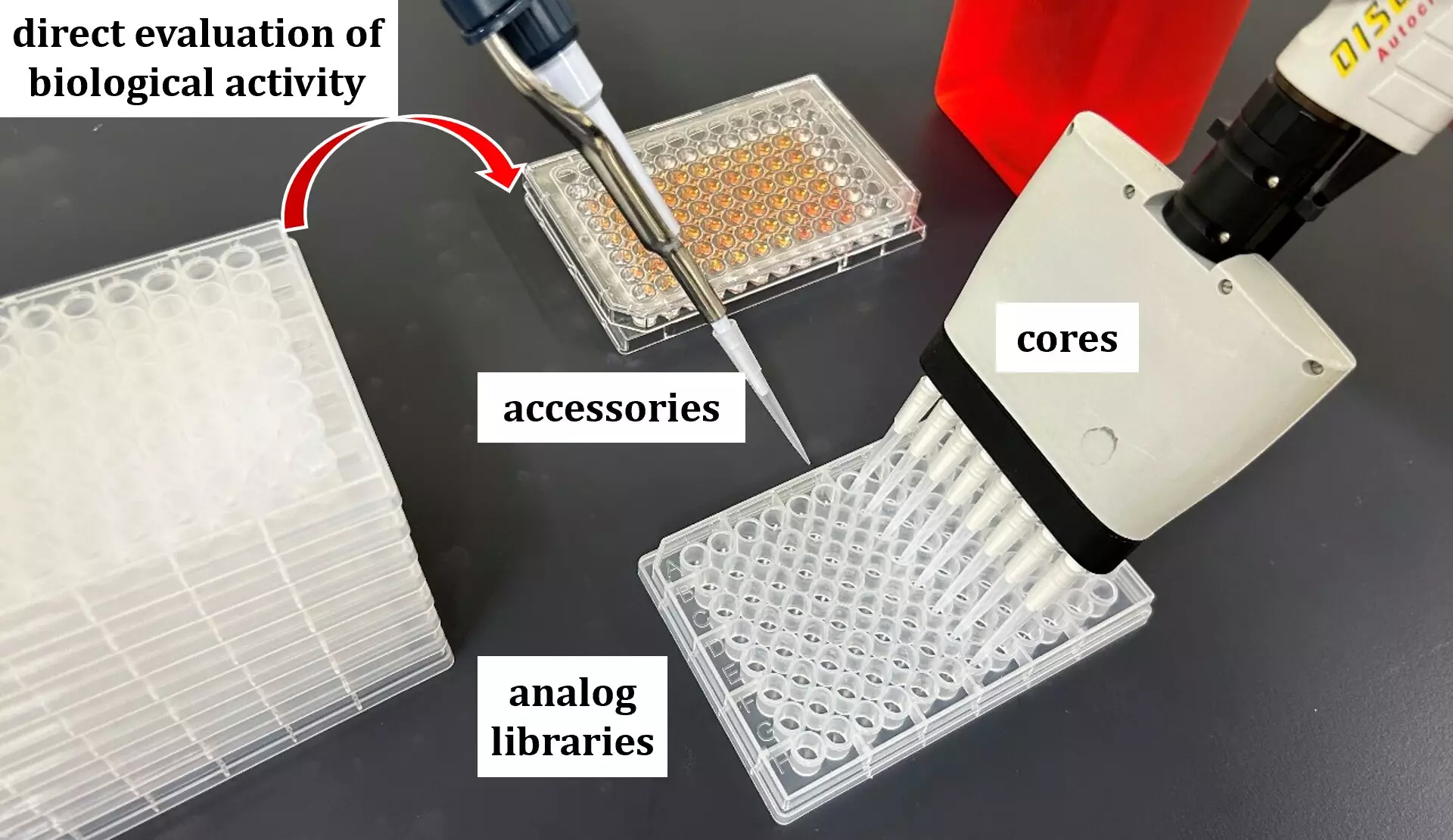In recent years, the rise of drug-resistant bacteria has emerged as one of the most daunting challenges facing global healthcare systems. As traditional antibiotics lose their efficacy, infections that were once easily treatable are becoming formidable adversaries. The World Health Organization has warned that without effective interventions, we could soon find ourselves in a post-antibiotic era, where routine surgeries become high-risk procedures and minor infections may result in dire consequences. This urgent need for innovative solutions has sparked a vibrant wave of research aimed at uncovering new antimicrobial candidates.
At the forefront of this battle are researchers at Hokkaido University, led by Assistant Professor Kazuki Yamamoto and Professor Satoshi Ichikawa. Their groundbreaking approach not only accelerates the discovery of antimicrobial agents but also represents a significant paradigm shift in drug development methodology, as highlighted in their publication in the esteemed journal Nature Communications.
Targeting the Enzyme: A Game-Changer in Antimicrobial Development
Yamamoto and Ichikawa’s research zeroes in on a promising target for the development of new antibiotics: an enzyme named phospho-N-acetylmuramoyl-pentapeptide-transferase (MraY). This enzyme is crucial for bacterial survival, facilitating the formation of lipid I, a fundamental component of the bacterial cell wall. By inhibiting MraY, it’s possible to stifle bacterial growth and counteract infections. Despite existing inhibitors of MraY, there remains a pressing demand for enhanced and more effective derivatives.
The team’s innovative “in situ build-up library method” stands out as a cutting-edge strategy that amalgamates thorough synthesis techniques for natural product derivatives with direct evaluations of biological activity. This approach creates a more efficient pathway for drug discovery, a necessity in our race against evolving bacterial resistance.
Crafting a Library of Antimicrobials
The ingenuity of the researchers lies in their method of dissecting known inhibitors into two functional segments: the MraY binding cores and the activity-modulating accessories. By combining seven different cores with 98 diverse accessories, they engineered an impressive library of 686 analogs designed to thwart MraY activity. This modular strategy demonstrates a flexibility that is crucial in the adaptation of drug candidates to effectively combat resistance.
Through rigorous testing, the researchers honed in on eight promising analogs with robust antibacterial capabilities. Notably, analog 2 stood out for its remarkable potency against drug-resistant strains. It also showcased efficacy in mouse infection models, a vital step in proving novel drugs’ potential before human trials. What’s more, preliminary assessments suggest low toxicity in human cells, raising the prospect of safe applications in clinical settings.
Broadening Horizons: A Versatile Drug Discovery Toolkit
The implications of Yamamoto and Ichikawa’s work extend beyond the realm of antibiotics. Their versatile drug discovery platform has demonstrated applicability to other classes of medications. In exploring tubulin-binding natural products, such as the well-known anti-cancer agents epothilone B and paclitaxel, the researchers managed to construct another library of 588 variants in a remarkably short time frame. This suggests that their method can serve different therapeutic areas, potentially revamping how new drugs across multiple domains can be synthesized and evaluated.
The implications of these findings are profound. Not only does this method present a more rapid and adaptable framework for drug development, but it also signals a hopeful direction in combating other pressing health issues. As discovery pathways become more efficient, the fight against diseases, whether bacterial, viral, or cancerous, becomes increasingly nuanced and formidable.
Challenges and the Road Ahead
While the progress made so far is commendable, several challenges remain on the horizon. The transition from laboratory success to clinical application is fraught with hurdles, including comprehensive testing for safety and efficacy in varied populations. Furthermore, the ability of bacteria to adapt and become resistant to new drugs implies a perpetual race against time. Continuous research and innovation will be crucial in staying ahead of these microbial adversaries.
Yamamoto and Ichikawa’s pioneering efforts exemplify the need for creative thinking in pharmaceutical science—their study shines a light on the power of collaboration between disciplines, and the promise of a new age in antibiotic development. With their transformative approach, we may be witnessing the dawn of a more hopeful chapter in our ongoing battle against drug-resistant infections.


Leave a Reply